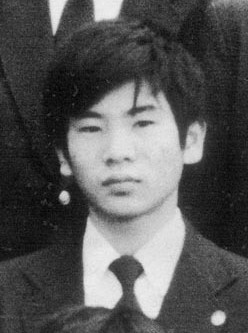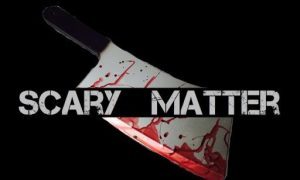
The Kobe School Killer
On the morning of May 27, 1997, in the port city of Kobe located on the Japanese island of Honshu, police got several calls from people passing the town’s junior high school about something that looked like a mannequin’s head laying in front of the gate. When police arrived they quickly realized that this was not a mannequin’s head, but the head of an 11-year-old mentally challenged boy named Jun Hase who had been missing for several days. Stuffed inside his mouth was a note that read: ‘This is the beginning of a game…You police guys stop me if you can?……. I desperately want to see people die….It is a thrill for me to commit murder…A bloody judgment is needed for my years of great bitterness”. The boy’s body was found on a hill near the school.
Police found fingerprints on the note that matched a fingerprint from a steel pipe used to bludgeoned to death a 9-year-old girl, and severely injure an 11-year-old girl in March of ‘97. Both girls were also badly mutilated with a knife. A couple of days after the murder of Jun Hase, two schoolgirls were attacked by a man with a hammer, but luckily both escaped serious injury. The janitor at the Kobe school told police that he had found decapitated pigeons and dead cats badly mutilated with their paws cut off around the school campus for several months prior to the discovery of the head of Jun Hase.
The police now realized that they were dealing with a potential serial killer. After countless interviews all around town, police were soon looking for a man in his thirties seen with Jun Hase a couple of hours before the boy went missing. No one turned themself in and in mid-June, the killer started to send several letters to local newspapers.
The first letter was three pages long. He called himself Sakakibara Seito. In it, he said “I am putting my life at stake for the sake of this game…If I’m caught, I’ll probably be hanged…police should be angrier and more tenacious in pursuing me… It’s only when I kill that I am liberated from the constant hatred that I suffer and that I am able to attain peace. It is only when I give pain to people that I can ease my own pain.” He also called the Japanese educational system “compulsory education which formed me, an invisible person.”
He bragged about the killings, saying that it brought him peace of mind to taunt the police for not being able to catch him. He also said that he would start killing up to three children a week because the hunger was getting more and more intense. The name Sakakibara Seito is made of symbols that mean: alcohol, devil, rose, saint and fight, so the media started calling him “Onibara” (Devil’s Rose). He was not happy and sent a letter telling the police “From now on if you misread my name or spoil my mood I will kill three vegetables a week…. If you think I can only kill children you are greatly mistaken.”
A national manhunt was now going on and police were working day and night and children were not allowed to walk the streets alone. Little is known how they finally caught him, but in late June he was apprehended. The killer turned out to be a 14-year-old boy from a nice middle-class family. Under Japanese law, his name was shielded from the public and his records sealed because of his age when he committed the crime. They referred to him as “Boy A”.
Like most serial killers he manifested the traits at an early age. He had a fondness for knives. He engaged in violent and odd sexual behavior like killing small animals and sexually abusing them. When police investigated his house, they found several diaries where the boy wrote in great detail about his crimes, and the bizarre behavior he engaged in. The boy admitted to using the diaries to re-live the crimes he committed and also requested to keep them. The details about the killing of Jun Hase were found in the diaries. He had lured the boy to a wooded area, and as soon they were alone he hit him over the head with a hammer and removed it with a hack saw. He then took the head home in a plastic bag, cleaned it, prayed to it, and sodomized the head before dumping it in front of the junior high school.
On May 10, 1997, a group of girls was attacked in Kobe by somebody with a hammer. Luckily, they all survived the attack. On May 16th, a 10-year-old girl named Ayaka Yamashita was attacked by somebody wielding a hammer and a knife. Sadly, she was beaten to death. He admitted to both the attacks. After May 16th, there was an entry in his diary that read: “I carried out sacred experiments today to confirm how fragile human beings are… I brought the hammer down when the girl turned to face me. I think I hit her a few times but I was too excited to remember.”
Because of his young age, he couldn’t be prosecuted and supposedly he spent 4 years in a mental institution and he was released back into the public when he was 19. After his release, he wrote an apology letter to the parents of the two people he killed. In 2015, he published a memoir about the murders He talked about leaving Jun Hase’s head out in public: “Let me confess something: I thought the sight was a beauty”. At the end of the book, he seemed remorseful and said that if he didn’t write about what he did, he said that he would go crazy.
He also started his own biographical website. A Japanese tabloid was so disgusted by that, they broke that law and published a picture of him and published his real name, Shinichiro Azuma.
https://murderpedia.org/male.S/s/sakakibara-seito.htm
